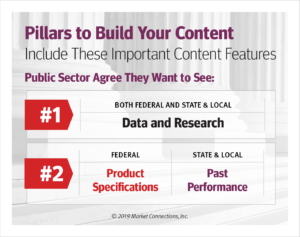thought leadership content
by Emily Wolfteich – Industry Analyst (Government Business Council)
Is the revolution here yet?
Flying among the dozens of buzzwords that make up government-speak is one that has a particularly deep resonance for state and local leaders – broadband.
The technical definition of broadband can be a little up for debate – the FCC is looking to increase the speed metric, again – but the simple definition is high-speed internet. Expanding access to broadband has been important for the government since the advent of the internet, and state and local leaders often use broadband expansion as a cornerstone of political campaigns. Faster internet access unlocks opportunities in commerce, in education, in telehealth, and even in investments in future technologies like artificial intelligence and machine learning for different state and local sectors.
Sounds good, right? Who doesn’t want internet for all? The move to virtual environments during the pandemic entwined our society with the internet more closely than ever, enabling education and work to continue and offering new opportunities for connection. However, this quick pivot to near-total reliance on the internet also widened disparities between those with regular, strong access and those without. And there are still many, many without.
Figuring out exactly how many represents part of the problem. The FCC estimates that as of their last count (the end of 2019), 14.5 million Americans lack access to high-speed internet (as defined by less than 25/3 mbps). Broadband Now, a private company, puts that number as high as 42 million. We’ll talk about why these definitions matter in a later blog, but the numbers mean that millions of people still don’t have reliable access to one of the most important tools of our time.
Federal Investment
There’s been significant federal money directed toward broadband expansion. From 2009 to 2017, the federal government invested about $47.3 billion in broadband infrastructure for rural areas. The Capital Projects Fund under the American Rescue Plan made $10 billion available in allocations to states and territories. The 2021 Infrastructure Investment and Jobs Act (IIJA) has $65 billion available through several different funding pools, including $2.75 billion through the Digital Equity Act and $48.2 billion through six programs within the National Telecommunications and Information Administration. In June, Louisiana, New Hampshire, Virginia, and West Virginia received more than $580 million from the CPF to expand access to those who had never had access before. Another $357 million went to Kansas, Maine, Maryland, and Minnesota in July to do the same thing.
Effective or Not?
However, despite this heavy investment, broadband still doesn’t reach all the people who need it. Synchronization issues between federal and state guidelines, as well as overlapping mandates within the federal government, have hindered efficient implementation, according to the Government Accountability Office. The Federal Communication Commission released a map in November 2022 showing levels of acceptable broadband access around the country – which state and local leaders and members of Congress immediately challenged. Inaccuracies on the map, which the FCC has asked for the public to flag, include the inadvertent exclusion of a fourth of Vermont. As this map will be used to disburse funds to regions that most need it, state officials are naturally concerned.
Locally, even regions that have already received grant money are facing implementation issues. A grant to the East Carroll Parish by the Louisiana broadband program Granting Underserved Municipalities Broadband Opportunities (fabulously acronymed GUMBO) was halted on its first day of construction by a challenge by monopoly Internet service provider Sparklight.
A Pillar of Equity
Access to fast, reliable internet isn’t just handy for watching TikToks or YouTubing how to mount a shelf. Like many social services, access to this tool can follow social fault lines. The Pew Research Center found that communities in rural or Tribal areas, low income and elderly populations, and people of color are disproportionately less likely to have broadband access. Nearly 17 million children do not have access to broadband, widening the “homework gap” when education moved to virtual in March of 2020. Telehealth services, crucial during the pandemic and now a cornerstone of agencies like the VA, are only available if the patient can access a computer with those capabilities. These problems aren’t just in rural West Virginia – urban connectivity by absolute numbers is lower than rural households, as families can’t afford internet service provider prices.
This four-part blog series will dive into some of these issues – why it’s so hard to make a cohesive broadband strategy, why it should be both a federal and state priority, and the transformative societal and economic changes that can come from effective implementation. Expanding broadband access is one of those unique challenges that involves bringing a lot of disparate groups to the table, from private industry to local leaders to telecommunication agencies. It’s a jigsaw puzzle that is still being pieced together. But when it is, the picture that will come into view is one of inclusivity, opportunity, and progress.
To read more thought leadership from Emily, connect with her on LinkedIn.
By David Hutchins, Industry Analyst
Overview
In a previous article, I outlined the most crucial innovations for the Defense Department over the next 10 years. This article takes a deeper dive into the importance of robotics and autonomous systems for the future of the US military. No longer a concept of science fiction, robotics and autonomous systems are already changing military operations. Recent examples of conflict in Nagorno-Karabakh and Ukraine have demonstrated just how pivotal these advanced systems can be. In contemporary conflict, drone swarms gather battlefield intelligence and overwhelm an enemy en masse with deadly speed and precision, loitering munitions target enemies beyond the line of sight, and autonomous systems patrol designated routes in place of manned systems or personnel.

These systems are also advancing military capabilities outside of conflict zones. The US military is using robotics to reduce physical workload and risk for military personnel and using the advanced speed and precision of autonomous systems to replace human operators for a variety of mission sets from analyzing data to piloting vessels. Below are just some examples of how different branches of the US military are using, or plan to use, robotics and autonomous systems to enhance capabilities.
Army
The Army is equipping soldiers with new Black Hornet drones that will simultaneously enhance reconnaissance capabilities and stealth. These palm-sized personal reconnaissance drones are used by dismounted soldiers to boost situational awareness on the battlefield. The pocket-sized UAV weighs roughly 1.16 oz (33g), has a flight endurance of 25 minutes, and has a range of 1.24 miles (2 kilometers). The Black Hornet can be launched in under 2 minutes and generates minimal noise making it ideal for stealth operations. Operated by a lightweight, body-mounted control system, the Black Hornet can hover or fly designated routes while capturing still images and live videos.
Air Force

The Air Force is partnering with defense firms to develop next-generation unmanned aerial vehicles (UAVs). The AI-enabled UAVs would serve as “autonomous wingmen” that can be equipped with missiles, radars, sensors, or other tools depending on the mission need. More recently referred to as collaborative combat aircraft (CCA), these AI-enabled UAVs could act as decoys or scouts, jam enemy signals, or even conduct their own strikes. Skyborg — the Air Force Research Laboratory’s artificial intelligence wingman program — has already developed several prototypes, including the XQ-58A Valkyrie.
Navy
The Navy is testing an autonomous submarine that could soon patrol waters in place of manned ships. The Orca Extra Large Unmanned Undersea Vehicle (XLUUV) measures 51 feet in length, can dive 11,000 feet, has a range of 6,500 nautical miles, and can operate autonomously for months at a time The Orca’s modular payload system allows it to take on different payloads to support different missions. If equipped with sonar payloads, for example, the Orca could detect enemy submarines and send location data to allied ships or aircraft. U.S. Naval Institute News reports that Orca will be capable of mine countermeasures, anti-submarine warfare, anti-surface warfare, and strike missions.
USMC

Photo: Marine Corps Warfighting Lab – National Defense Magazine
The Marine Corps Warfighting Laboratory is leveraging AI and automation to provide Marines with next-generation technology. For example, the Expeditionary Modular Autonomous Vehicle (EMAV) will enhance the mobility of Marines on and off the battlefield. The EMAV is a tracked unmanned ground platform with a flat top that can carry over 7,000 pounds and can be outfitted with sensors, communications equipment, or weapons. The EMAV can autonomously carry heavy equipment or transport casualties and also provide cover during combat. Historically, it would several Marines to carry an injured squadmate to safety, but the EMAV can autonomously transport the wounded Marine to an aid station. The platforms are designed to operate in complex, congested terrain, navigating around debris. If equipped with a weapons system, the EMAV can also be used to engage the enemy.
Conclusion:
There are many more examples of robotics or autonomous systems that are changing how the US military operates. Far too many to list in this here. These examples simply highlight the possibilities on the horizon. While the time it will take to realize some of these advancements is yet to be determined, I can confidently assert that autonomous systems and robotics represent the future of warfare.
Questions? Please reach out to David on LinkedIn, or e-mail at dhutchins@govexec.com
Government technology influencers and buyers need content that will help them make informed decisions and often seek information from third-party experts such as professional associations and industry vendors to help educate them.

From 2019 Content Marketing Review: Federal & Beyond
Market Connections’ recent Content Marketing Review Study highlights the value of thought leadership content for government audiences in establishing your company as an expert and leader in the field. According to the study, public sector buyers of products, services and other emerging technologies prefer research reports, white papers and case studies to help them make informed decisions. To help them, this content should include detailed information such as data and research, examples of past performance and product specifications. If done right, one in five respondents indicated they incorporate vendor content into their RFI or RFP, the holy grail for companies competing for government contracts.
The savviest B2G marketing and sales teams commission primary research to help them better understand their target audience. Drilling down into the unique challenges and barriers buyers face, the goals they are trying to achieve, and how they define success helps shape messages, market strategy and RFP responses. The data and research gathered can also be a key component of marketing content, thereby educating their customer and becoming a perceived valued partner all at once.
When incorporated into a multi-faceted marketing campaign, B2G marketers can see a strong return on investment (ROI) from their research-based thought leadership content. From becoming known as the industry experts in one area (SolarWinds) to increasing sales (Iron Mountain), thought leadership has a real, measurable impact.
How can you create content that educates and resonates?
Best Practices for Developing and Leveraging Research-Based Thought Leadership Content:
- Think about your unique services and solutions. Focus on the big picture, don’t limit yourself to a single project, RFP or recompete.
- Assemble an internal, cross-functional team (PR, sales, and subject matter experts) to create a research effort that meets your marketing, PR, lead generation and sales objectives.
- Hone in on their needs and challenges (because those are what your offerings are going to address).
- Think about dissemination. What is the best way to connect the valuable information to your target audience?
- Don’t limit your outreach to one platform. Leverage your content across marketing channels.
Want to learn more? Join our upcoming webinar, “Does Thought Leadership Still Matter to Government Audiences?” on Thursday, July 25 from 2-3 PM EDT. Register here.



